人教高中英语必修3 Unit 4 Astronomy: the science of the stars Reading (共19张PPT)
文档属性
| 名称 | 人教高中英语必修3 Unit 4 Astronomy: the science of the stars Reading (共19张PPT) | 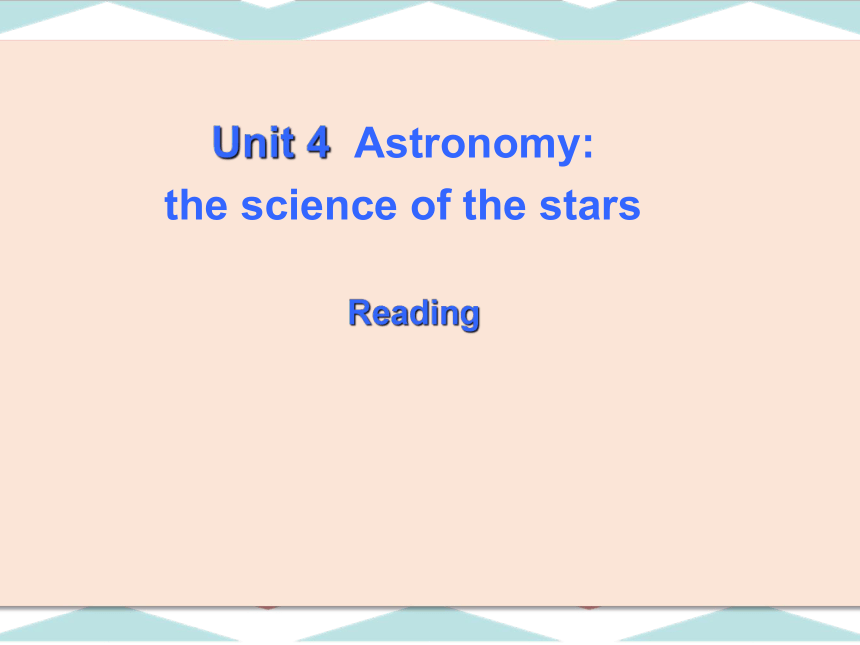 | |
| 格式 | zip | ||
| 文件大小 | 13.2MB | ||
| 资源类型 | 教案 | ||
| 版本资源 | 人教版(新课程标准) | ||
| 科目 | 英语 | ||
| 更新时间 | 2020-03-17 21:39:12 | ||
图片预览

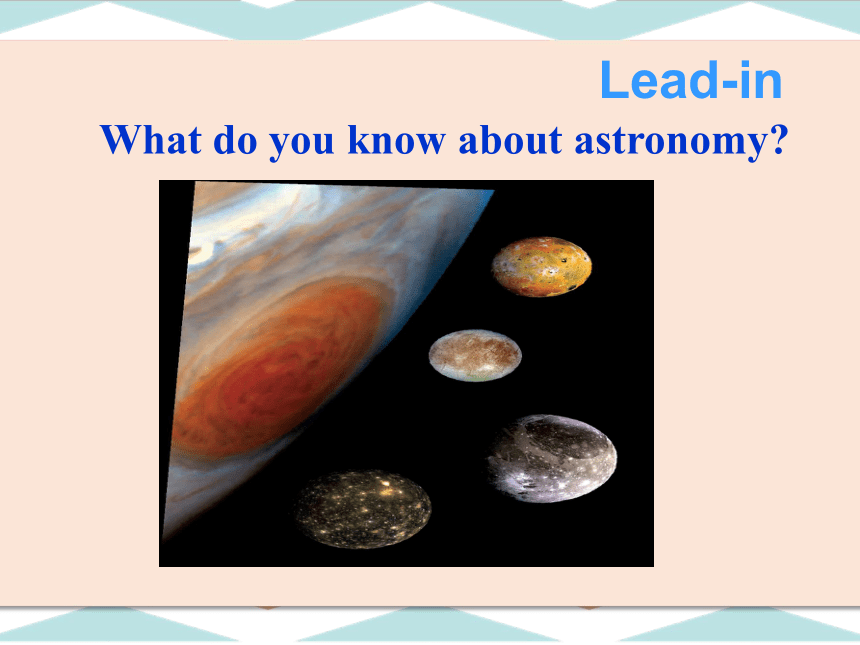
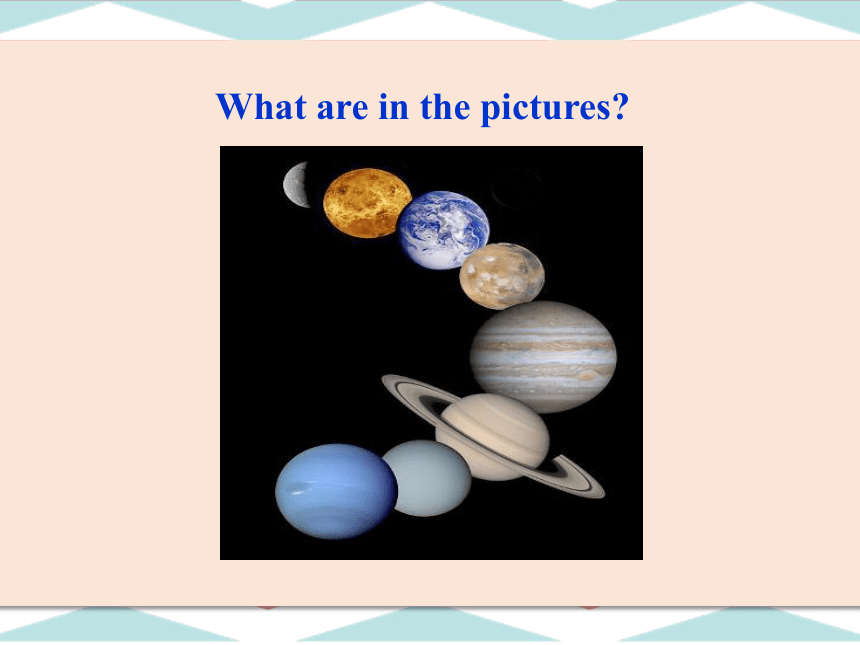
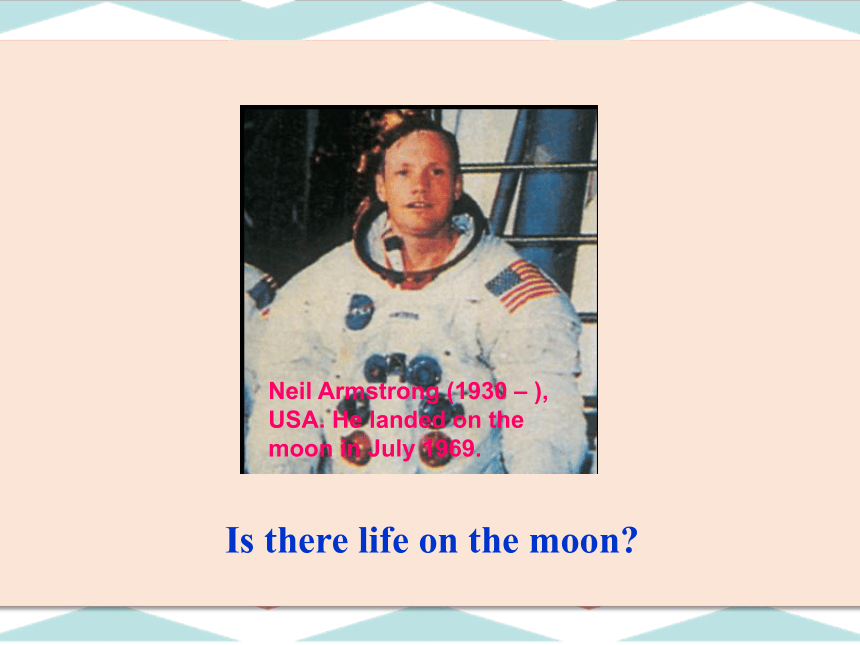
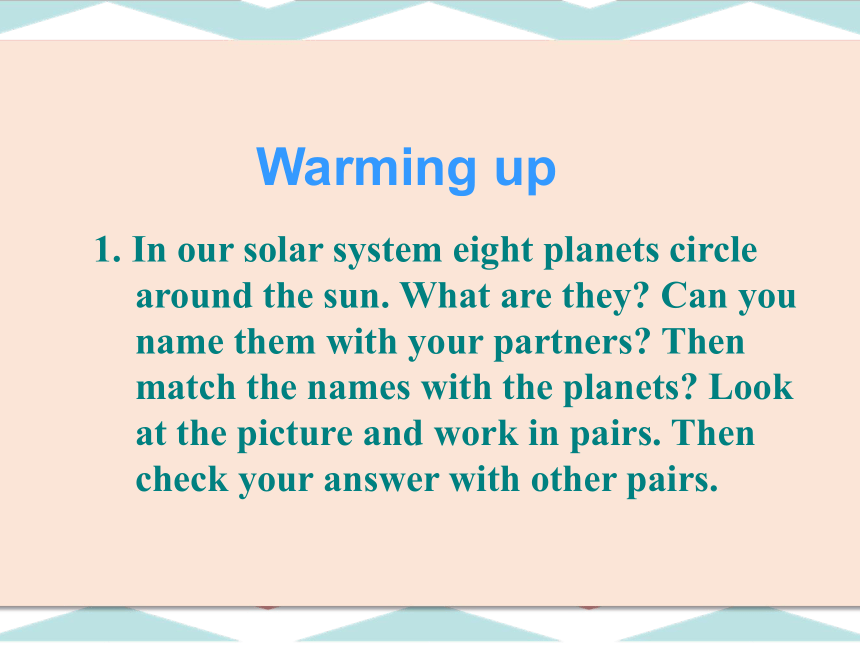
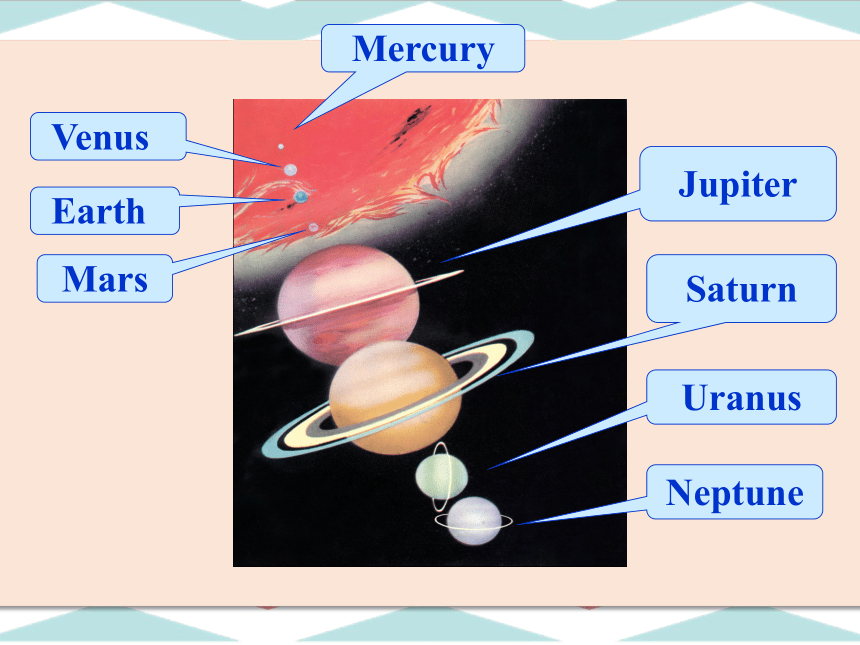
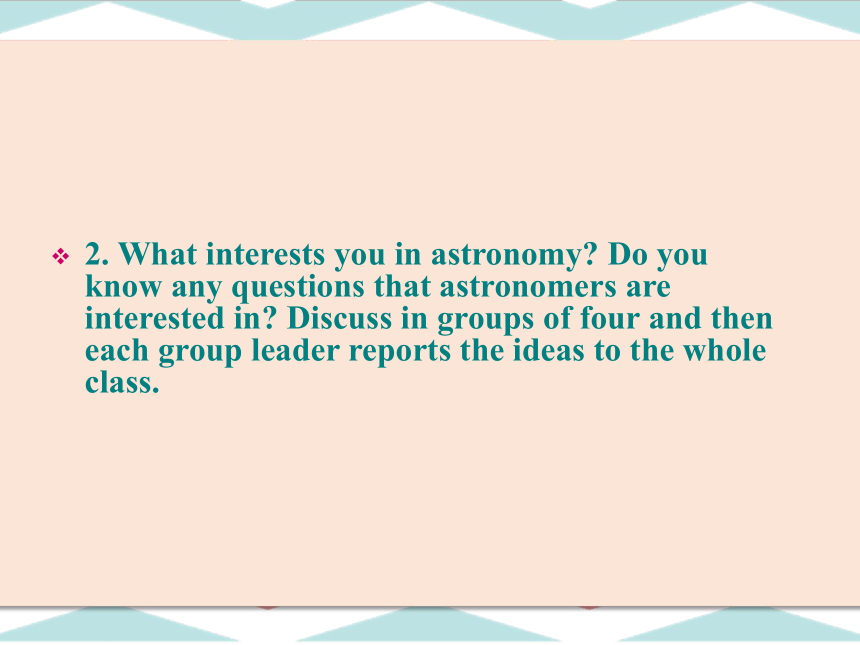
文档简介
(共19张PPT)
Reading
Unit 4 Astronomy:
the science of the stars
What do you know about astronomy?
Lead-in
What are in the pictures?
Is there life on the moon?
Neil Armstrong (1930 – ), USA. He landed on the moon in July 1969.
1. In our solar system eight planets circle around the sun. What are they? Can you name them with your partners? Then match the names with the planets? Look at the picture and work in pairs. Then check your answer with other pairs.
Warming up
Mercury
Venus
Earth
Mars
Jupiter
Saturn
Uranus
Neptune
2. What interests you in astronomy? Do you know any questions that astronomers are interested in? Discuss in groups of four and then each group leader reports the ideas to the whole class.
Pre-reading
1. Read the title and look at the pictures. Think about these questions, share with your partner and then with the class:
1) What do you know about the origin of life on earth?
2) Do you know how life began on earth is explained in different religions and cultures?
2. Read the text quickly to check if the idea in the text is different from those you have already known about.
Read the text quickly and write down the main idea for each paragraph.
While-reading
A widely accepted theory
about the formation of the universe
The formation of the earth
The importance of water
for life
The development of plants
and animals on the earth
The arrival of humans and
their impact on the earth
Main Body Paragraph 1:
Paragraph 2:
Paragraph 3:
Paragraph 4:
Paragraph 5:
Work in pairs. Put the order of development of life into a timeline first according to your common sense, and then according to the reading passage.
While-reading
10
7
3
8
4
9
6
1
5
2
12
11
1. Insects and amphibians appeared.
3. The earth became a solid ball.
5. Reptiles appeared.
7. The earth was a cloud of dust.
9. Shellfish and other fish appeared.
11. Clever animals with hands and feet appeared.
2. Dinosaurs appeared.
4. Small plants grew on the water.
6. Plants began to grow on dry land.
8. Water appeared on the earth.
10. The universe began with a "Big Bang".
12. Mammals appeared.
Read the text carefully and think about what you have read and discuss these questions in pairs.
While-reading
1. Why was the earth different from the other planets?
Because water remained on the earth.
2. Why did the plants grow before the animals came?
Because plants provided oxygen for animals to breathe.
3. Why is it wrong to show films with dinosaurs and people together?
Because dinosaurs died out long before human beings developed on the earth.
4. There used to be nine planets in the solar system. Recently scientists have decided that one of them can no longer be considered a planet. Do you know the name of that planet? Do you know why they removed it?
The name is Pluto. Scientists now think it is too small to be called a planet.
5. What problem is caused by human beings?
Human beings cause global warming.
1. Which words, phrases, structures, or sentences are difficult for you to understand?
Underline them, guess using context and then ask your teacher.
2. Read aloud after the tape, paying attention to pronunciation, intonation and rhythm.
Post-reading
Retell the text, and then write a summary (about 100 words) of the text in your own words.
Reading
Unit 4 Astronomy:
the science of the stars
What do you know about astronomy?
Lead-in
What are in the pictures?
Is there life on the moon?
Neil Armstrong (1930 – ), USA. He landed on the moon in July 1969.
1. In our solar system eight planets circle around the sun. What are they? Can you name them with your partners? Then match the names with the planets? Look at the picture and work in pairs. Then check your answer with other pairs.
Warming up
Mercury
Venus
Earth
Mars
Jupiter
Saturn
Uranus
Neptune
2. What interests you in astronomy? Do you know any questions that astronomers are interested in? Discuss in groups of four and then each group leader reports the ideas to the whole class.
Pre-reading
1. Read the title and look at the pictures. Think about these questions, share with your partner and then with the class:
1) What do you know about the origin of life on earth?
2) Do you know how life began on earth is explained in different religions and cultures?
2. Read the text quickly to check if the idea in the text is different from those you have already known about.
Read the text quickly and write down the main idea for each paragraph.
While-reading
A widely accepted theory
about the formation of the universe
The formation of the earth
The importance of water
for life
The development of plants
and animals on the earth
The arrival of humans and
their impact on the earth
Main Body Paragraph 1:
Paragraph 2:
Paragraph 3:
Paragraph 4:
Paragraph 5:
Work in pairs. Put the order of development of life into a timeline first according to your common sense, and then according to the reading passage.
While-reading
10
7
3
8
4
9
6
1
5
2
12
11
1. Insects and amphibians appeared.
3. The earth became a solid ball.
5. Reptiles appeared.
7. The earth was a cloud of dust.
9. Shellfish and other fish appeared.
11. Clever animals with hands and feet appeared.
2. Dinosaurs appeared.
4. Small plants grew on the water.
6. Plants began to grow on dry land.
8. Water appeared on the earth.
10. The universe began with a "Big Bang".
12. Mammals appeared.
Read the text carefully and think about what you have read and discuss these questions in pairs.
While-reading
1. Why was the earth different from the other planets?
Because water remained on the earth.
2. Why did the plants grow before the animals came?
Because plants provided oxygen for animals to breathe.
3. Why is it wrong to show films with dinosaurs and people together?
Because dinosaurs died out long before human beings developed on the earth.
4. There used to be nine planets in the solar system. Recently scientists have decided that one of them can no longer be considered a planet. Do you know the name of that planet? Do you know why they removed it?
The name is Pluto. Scientists now think it is too small to be called a planet.
5. What problem is caused by human beings?
Human beings cause global warming.
1. Which words, phrases, structures, or sentences are difficult for you to understand?
Underline them, guess using context and then ask your teacher.
2. Read aloud after the tape, paying attention to pronunciation, intonation and rhythm.
Post-reading
Retell the text, and then write a summary (about 100 words) of the text in your own words.
同课章节目录
